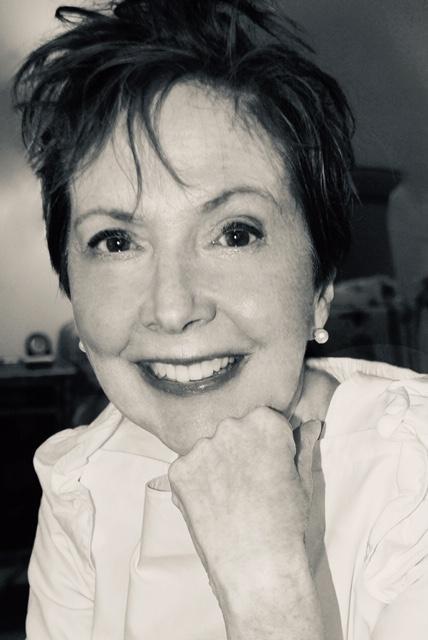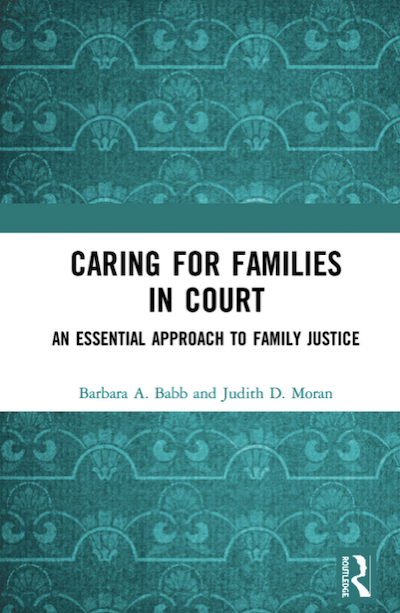Georgetown BSN Alumna Co-Authors Book About Family Court Reforms
January 11, 2021 – BSN alumna Judith DiMaio Moran received a position as a lawyer in a family court due to her background in nursing.

“I got my second job as a lawyer because I had been a nurse,” recalled Moran, who was hired in Baltimore to lead a nascent family court project.
“When [the judge] offered me the job, he said, ‘I’m giving you this job because you had been a nurse, and I know that you will be able to manage a system in a way that’s both caring and also expedient.’ Because he said, ‘nurses get things done.’ So, I thought here I was coming full circle almost. I got this job because of my first level of education.”
Moran, who graduated in Georgetown’s Class of 1968, later went on to earn a JD, as well as master’s degrees in counseling and narrative medicine. She has held various administrative and teaching positions, including conceptualizing and offering a seminar for Columbia Law students on narrative studies. She married a fellow Hoya, and they have three children, two of whom are also GU graduates.
Book on Family Court
Drawing on her experience as a nurse and lawyer and her deep interest in writing and narratives, Moran coauthored with Barbara A. Babb – a law professor who had been a teacher – the book, Caring for Families in Court: An Essential Approach to Family Justice (Routledge 2019).
The two focused on crystalizing – for real-world practice – theoretical ideas associated with both “therapeutic jurisprudence,” which Babb specializes in, as well as “the ethic of care.”
“We both – for many, many years – worked in family courts and saw the deficits in how family courts were run,” Moran said. “We thought that this book would inspire people to make some changes. In parts of the book, we actually surveyed courts around the world where we saw evidence of . . . innovations that really spoke to what we were writing about.”
The two have been invited to speak about their book in many locations, Moran said, noting, “We’re so pleased that this book really has been of interest to people in our world of family law and family court reform.”
Holistic Care
Moran noted that her grounding in caring for individuals in a holistic way – beyond their illnesses and understanding their lives outside of the hospital – began at Georgetown.

“What I remember . . . was a very, very distinct focus on being human as a caregiver, getting to know your patient, getting to know that person’s story,” she said.
“My interest always had been, because that’s what I had been taught [at Georgetown], to really get to know my patients – to get to know where they lived, who they lived with, what their concerns at home were,” Moran said. “Sending a patient home who had a chronic illness, how was that going to work within a family system?”
Moran practiced public health nursing for a period and underlined questions she faced: “When you go into a home where somebody who is sick and needs care, how does that work?” and “Who’s thinking about what’s in that household to be able to modify it so that the person who needs the care is getting it?”
She added: “I think Georgetown was exceptional in preparing us back in 1965 to think that way.”
Transition to Law
In the late 1990s, Moran served as the family division coordinator for the circuit court for Baltimore City, a position that allowed her, using that holistic framework she developed at Georgetown, to look at helping families in the court system.
“For me, family law was a very logical extension of being a nurse, because . . . I likened the family court to a legal emergency room,” she said.
The court, as one out of five jurisdictions across the country, received funds from the American Bar Association “to create novel family court projects, ones that would be much more responsive to the totality of families’ needs – not just giving them legal forums to resolve their disputes, but putting in place services,” she said.
In a major urban area like Baltimore, Moran noted, “people often came to the courthouse not only because they were in legal distress, but it was really the last place that they had to go when social services in the community were overwhelmed.”
Hunger, homelessness, child neglect were issues she witnessed at the courthouse, and the project she led sought “to address a whole host of needs.”
Georgetown Foundation
Moran said that in 1968, as a woman in college, she “was on the precipice of women thinking about different ways of approaching a professional career.” She and her classmates built upon their Georgetown BSN degrees in various ways, she highlighted.
“I think of my own progression from being a nurse where I took care of a person,” she said. “By and large, it was a one-to-one enterprise of caretaking. One of the things that drew me to going to law school was a wider horizon and being able to implement policies that would care for larger groups of people – maybe even making segments of society better.”
Her parents encouraged her to pursue a baccalaureate degree versus a diploma program in case she wanted to go on for graduate studies, which she did.
Moran is pleased with the liberal arts education she received and recalled the philosophy courses students were required to take. “It was rigorous,” she remembered. “I mean, I’m sure it still is, but it certainly was a very solid baccalaureate education.”
The alumna believes nurses have the education and the experiences to be influential in many fields, including policy- and law-making. Throughout her own journey, “a commitment to making things better for people,” something that was nurtured at Georgetown, has guided the way.
By Bill Cessato
- Tagged
- Nursing History
